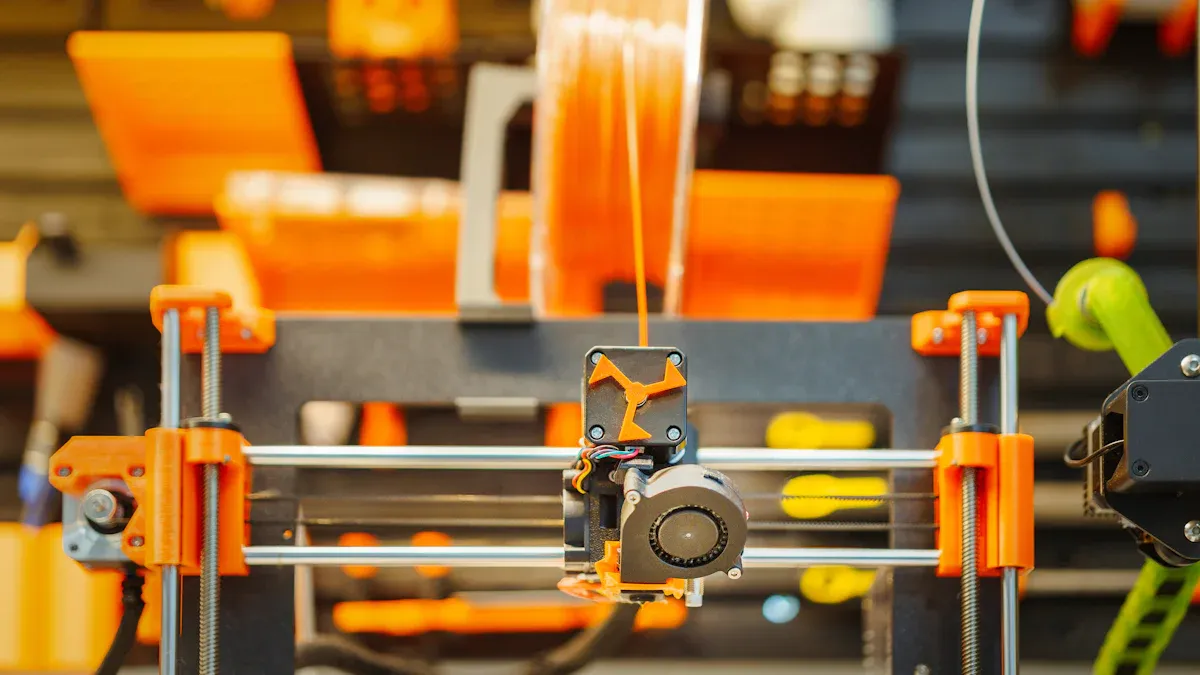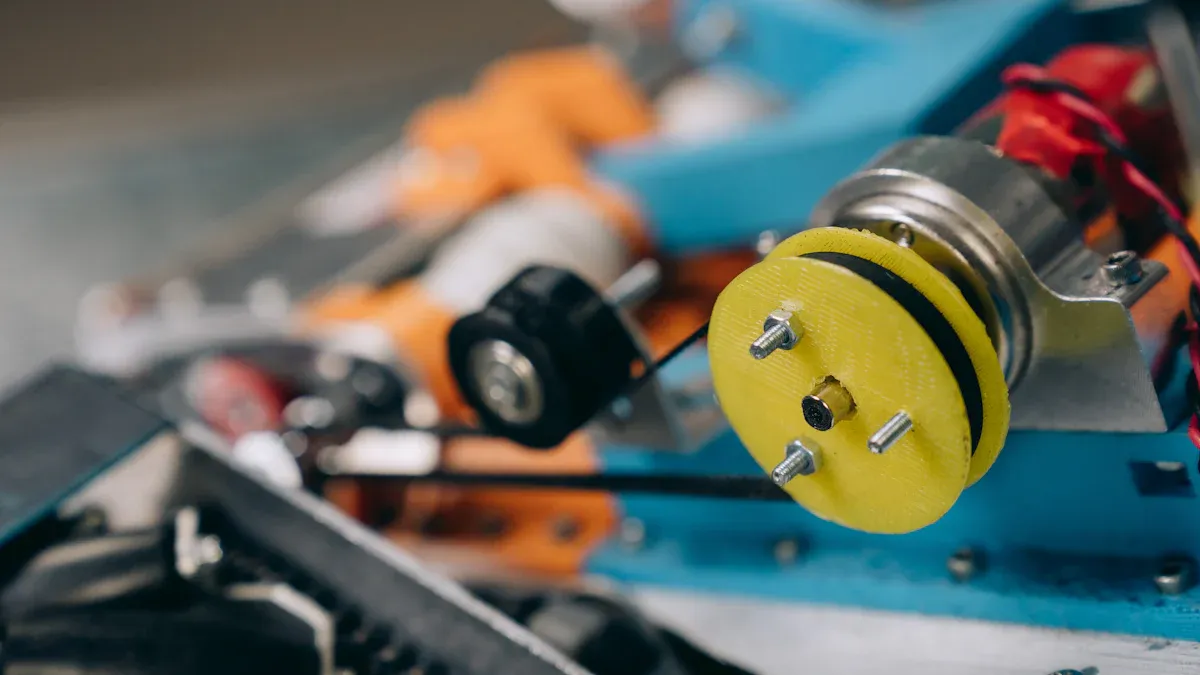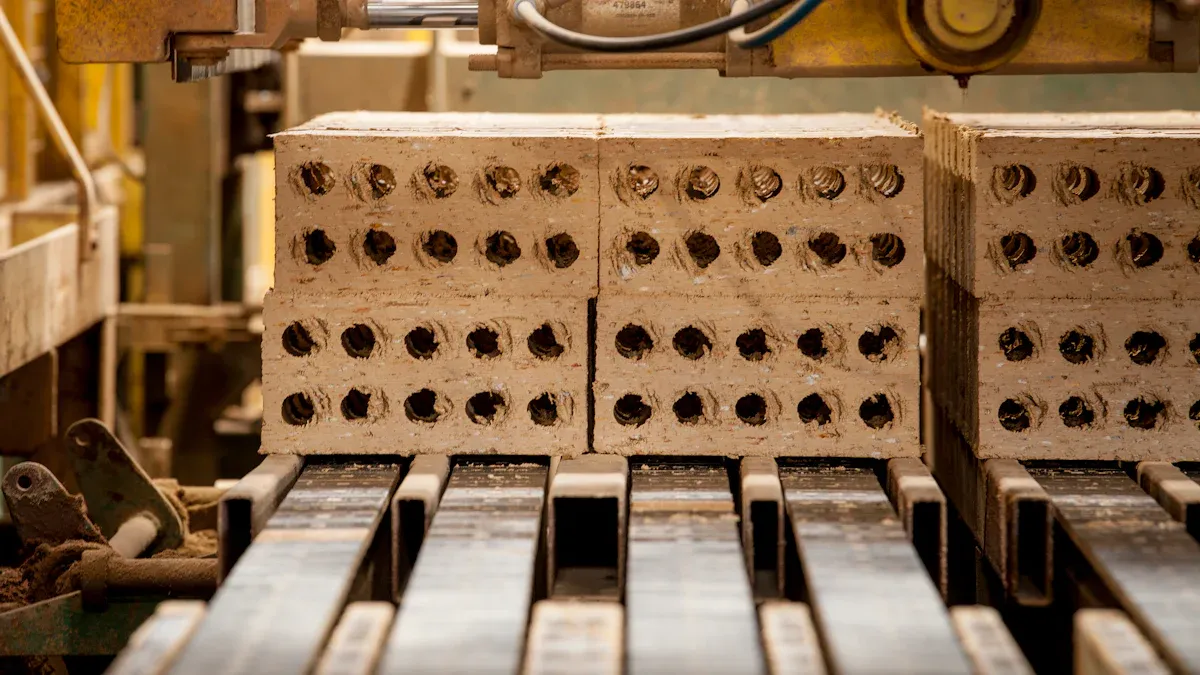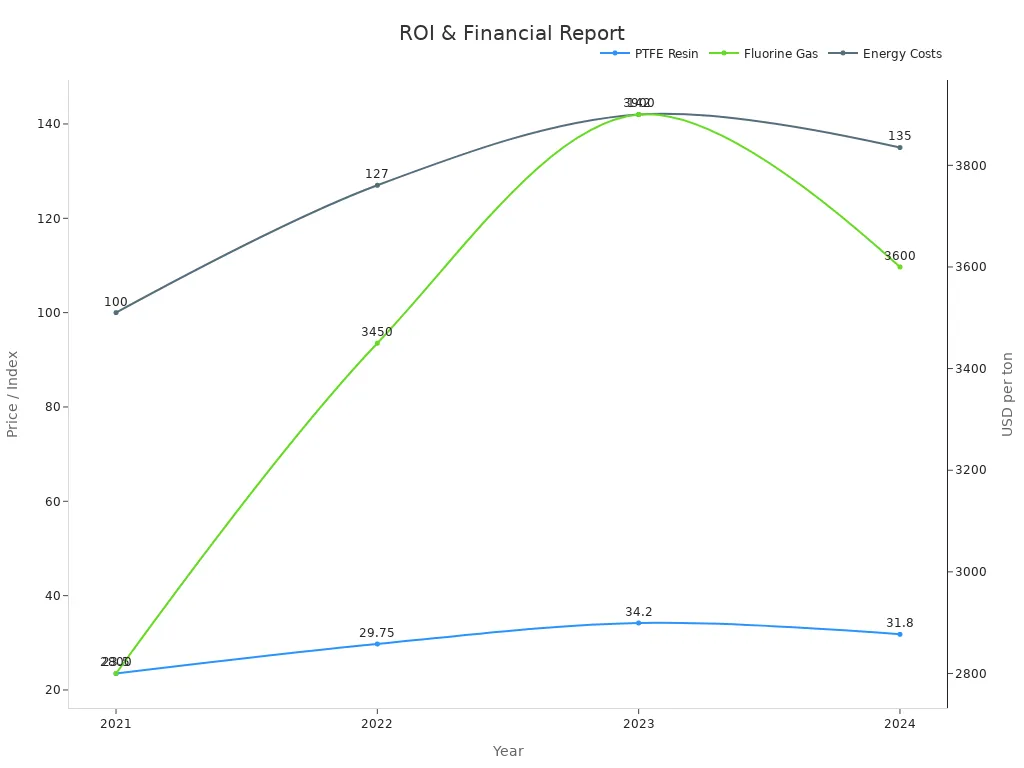
Choosing the right extruder is crucial for efficient production. Single screw extruders, holding over 40% of the global market share in 2023, remain popular for simple applications. However, as demand for automation and lightweight products grows, understanding the differences between a twin screw extruder and its counterpart, the extrusion twin screw, ensures better performance and cost-effectiveness. Additionally, for applications requiring versatility, the screw injection moulding machine and screw injection machine offer advanced solutions that cater to a variety of production needs.
Single Screw Extruder Overview
Definition and Functionality
A single screw extruder features a single rotating screw housed within a thermally insulated barrel. This design allows precise control over parameters like temperature, screw speed, and barrel pressure. These settings are adjusted based on the material being processed, ensuring efficient melting and shaping. The simplicity of its mechanism makes it a reliable choice for many industries, especially when processing thermoplastics or other materials with predictable behavior.
Common Applications
Single screw extruders are widely used across various industries. Here’s a quick look at their applications:
| Industry | Application Description | Market Growth Forecasts |
|---|---|---|
| Plastics | Melting and forming thermoplastics, driven by rising production of PE and PP. | CAGR of approximately 4-5% through 2030 |
| Food Processing | Producing processed foods like snacks and cereals. | Global market expected to reach over $75 billion by 2026 |
| Rubber Compounding | Mixing and shaping rubber compounds for tires and automotive applications. | Global tire production projected to surpass 2 billion units annually by 2025 |
| Biomedical | Biopolymer production for sustainable packaging and medical devices. | Emerging market with advancements in extrusion technology. |
Advantages
Single screw extruders offer several benefits that make them a popular choice:
- Cost-Effectiveness: Their simpler design results in lower initial investment and maintenance costs.
- Pressure Control: Advanced controllers can reduce pressure variation by 20-40%, depending on material viscosity. This ensures consistent product quality.
- Ease of Use: Autotuning features simplify operation, eliminating the need for manual adjustments.
- Versatility: They handle a wide range of materials, making them suitable for diverse applications.
Limitations
While single screw extruders are versatile, they do have some challenges:
| Challenge | Description |
|---|---|
| Limited Material Mixing | Achieving uniform distribution of additives or fillers can be difficult. |
| Pressure Consistency Issues | Variations in feedstock often lead to fluctuations in pressure. |
| Material Flow Constraints | High-viscosity materials may not fill the die completely, resulting in defective products. |
Despite these limitations, single screw extruders remain a reliable option for simpler applications. For more complex processes, a Twin Screw Extruder might be a better fit due to its superior mixing capabilities.
Twin Screw Extruder Overview
Definition and Functionality
A twin screw extruder uses two intermeshing screws rotating inside a barrel to process materials. This design allows for better mixing, kneading, and shearing of materials compared to single screw systems. The screws can rotate in the same direction (co-rotating) or opposite directions (counter-rotating), depending on the application. This flexibility makes it ideal for handling complex materials or processes that require precise control over temperature and pressure.
Common Applications
Twin screw extruders are widely used in industries that demand high performance and versatility. Some common applications include:
- Compounding
- Extrusion
- Recycling
- Pelletizing
These applications highlight the extruder’s ability to handle diverse materials and processes efficiently.
Advantages
Twin screw extruders offer several benefits that make them a preferred choice for complex operations:
- Enhanced Mixing: The intermeshing screws ensure uniform distribution of additives and fillers.
- Versatility: They can process a wide range of materials, including high-viscosity and heat-sensitive compounds.
- Regulatory Compliance: Advanced designs meet strict emissions and material safety standards, such as REACH and ASTM International benchmarks.
| Metric/Standard | Description |
|---|---|
| Emissions Regulations | Twin-screw extruder gearboxes minimize oil leaks and conform to stricter emission norms through advanced seals and synthetic lubricants. |
| Material Compliance | Compliance with health and safety regulations like REACH ensures the use of non-toxic components in food processing and pharmaceuticals. |
| Performance Standards | Gearbox designs are rigorously assessed against benchmarks set by organizations like ASTM International, leading to improvements in thermal conductivity and stress resistance. |
Limitations
While twin screw extruders excel in performance, they come with a few challenges:
- Higher Initial Cost: The advanced design and technology result in a higher upfront investment.
- Complex Maintenance: The intricate mechanism requires specialized knowledge for repairs and upkeep.
Despite these limitations, twin screw extruders remain a top choice for industries requiring precision and efficiency.
Key Differences Between Single and Twin Screw Extruders

Design and Mechanism
The design of single and twin screw extruders differs significantly, impacting their functionality. A single screw extruder uses one rotating screw inside a barrel, relying on channel depth to control material flow and achieve desired output. This straightforward mechanism makes it easier to operate but limits its ability to mix materials effectively.
On the other hand, twin screw extruders feature two intermeshing screws that rotate either in the same direction (co-rotating) or opposite directions (counter-rotating). This design allows for better mixing, kneading, and shearing of materials. Twin screws can apply high shear in small increments, thanks to multiple changes in channel depth. This makes them ideal for complex processes like melt blending and dispersing solid fillers.
Twin screw extruders also excel in self-cleaning, reducing downtime during material changes—a feature single screw systems lack.
Material Processing Capabilities
When it comes to material processing, single screw extruders are suitable for basic applications like plastic extrusion and simple compounding. They handle thermoplastics, rubbers, and fillers effectively but struggle with high-viscosity or heat-sensitive materials. Their limited mixing capability makes them less ideal for formulations requiring uniform additive distribution.
Twin screw extruders, however, shine in handling diverse materials. They offer excellent mixing capabilities, making them perfect for incorporating additives or fillers into complex formulations. Their ability to adjust processing parameters ensures flexibility, allowing manufacturers to work with high-viscosity compounds and heat-sensitive materials. Additionally, twin screws excel in degassing and devolatilization, ensuring stringent quality control for volatile materials.
| Feature | Single Screw Extruder | Twin Screw Extruder |
|---|---|---|
| Processing Capabilities | Suitable for basic plastic extrusion and simple compounding. | Handles a wider array of materials with intricate mixing. |
| Throughput and Efficiency | Lower throughput, suitable for lower production targets. | Higher throughput, resulting in better product quality. |
| Flexibility and Versatility | Lower flexibility, simpler operation, cheaper to manufacture. | Higher flexibility, adjustable processing parameters. |
| Material Flexibility | Acceptable for thermoplastics, rubbers, and fillers. | Improved handling of complex formulations and high-viscosity materials. |
| Mixing Capability | Adequate for simple formulations. | Excellent mixing, ideal for incorporating additives. |
| Degassing and Devolatilization | Limited capability, not suitable for volatile removal. | Good capability, suitable for stringent quality control. |
Performance and Efficiency
Performance and efficiency are critical factors when choosing between these extruders. Single screw extruders are developing toward higher speeds and efficiency, making them suitable for standard applications. However, their positive conveying behavior can lead to higher scrap rates due to less consistent output quality.
Twin screw extruders, in contrast, deliver superior performance in blending and reactive extrusion. Their higher throughput rates and better output quality reduce scrap rates, making them more efficient for complex formulations. For example, twin screws are particularly effective in processing cross-linkable polyethylene (PE), ensuring consistent results and energy savings.
While single screws are economical for simpler tasks, twin screws offer better long-term efficiency for specialized needs.
Cost and Complexity
Cost and complexity often influence the decision between single and twin screw extruders. Single screw systems are more economical, with lower initial investment and maintenance costs. Their simpler design makes them accessible for small and medium enterprises (SMEs) and easier to operate.
Twin screw extruders, however, come with higher upfront costs due to their advanced design and technology. Maintenance expenses are also significant, as their intricate mechanism requires specialized knowledge for repairs. Despite these challenges, twin screws provide better long-term returns for industries requiring precision and versatility.
| Aspect | Twin Screw Extruders |
|---|---|
| Initial Investment | High initial investment costs |
| Maintenance Costs | Significant ongoing maintenance expenses |
| Market Impact | Limits market expansion for SMEs |
| Barriers to Adoption | High costs create barriers for new technology adoption |
Manufacturers must weigh these factors carefully to determine which extruder aligns with their production goals and budget.
Factors to Consider When Choosing
Application and Material Requirements
The first step in choosing the right extruder is understanding your application and the materials you’ll process. Different industries have unique needs, and the extruder must align with those requirements. For instance, single screw extruders work well for straightforward applications like plastic extrusion. However, industries like pharmaceuticals or automotive manufacturing often require the advanced capabilities of a twin screw extruder.
Key factors to consider include:
- Material Handling: Consistent material flow is essential to avoid interruptions or defects during production.
- Temperature Control: Maintaining optimal temperatures ensures materials don’t degrade and final products meet quality standards.
- Die Design Complexity: Complex profiles require precise die designs, which demand expertise and precision engineering.
Did you know? Aluminum 6xxx-series extrusions are popular in automotive structures due to their flexibility and strength. However, selecting the right alloy and temper is critical to meet tensile property specifications.
For specialized applications, like nano-compounding or high-performance polymer production, a twin screw extruder offers the precision and flexibility needed to handle complex formulations. Its ability to mix additives uniformly and maintain consistent quality makes it a top choice for demanding industries.
Budget and Cost Constraints
Budget plays a significant role in deciding between extruder types. While single screw extruders are more affordable upfront, twin screw extruders often provide better long-term value for complex applications.
| Evidence Type | Details |
|---|---|
| Cost Considerations | Pharmaceutical companies pay 20-35% premiums for precise thermal profiles. |
| Budget Constraints | Food additive developers prefer refurbished systems under $150,000. |
| Market Trends | Chinese manufacturers offer 60-70% cost savings over European models. |
| Total Cost of Ownership | Energy-efficient drives cut operational costs by 18-22% over five years. |
| ROI Expectations | Labs target mid-priced extruders ($120,000-$180,000) for energy savings. |
Raw material costs also impact budgets. For example, aluminum prices can account for 60-70% of total extrusion costs. To manage these fluctuations, manufacturers often use strategies like long-term contracts or recycling initiatives.
Tip: If you’re working with a tight budget, consider refurbished systems or energy-efficient models to reduce costs without compromising performance.
Performance and Output Expectations
Performance expectations vary depending on the industry and application. Single screw extruders are ideal for standard tasks with lower throughput requirements. However, industries requiring high precision and output, such as medical device manufacturing, benefit from the advanced capabilities of twin screw extruders.
| Feature | Single Screw Extruder | Twin Screw Extruder |
|---|---|---|
| Throughput | Lower, suitable for small-scale production. | Higher, ideal for large-scale operations. |
| Mixing Capability | Limited, adequate for simple formulations. | Excellent, ensures uniform additive distribution. |
| Temperature Uniformity | Basic, may vary across barrel zones. | Validated uniformity, critical for medical applications. |
For example, 92% of medical device manufacturers require validated temperature uniformity across all barrel zones. This ensures consistent product quality and compliance with strict industry standards.
Fun Fact: Twin screw extruders excel in handling heat-sensitive materials like PCL, thanks to their advanced cooling systems and faster transition times.
Maintenance and Longevity
Maintenance and longevity are crucial when evaluating extruders. Single screw extruders are simpler to maintain due to their straightforward design. They’re a great choice for businesses with limited technical expertise.
Twin screw extruders, while more complex, offer features like self-cleaning capabilities that reduce downtime during material changes. This makes them a better option for industries with frequent production shifts.
To maximize longevity, consider these factors:
- Design Complexity: Simpler designs are easier to maintain but may lack advanced features.
- Material Choice: Durable materials extend the lifespan of the extruder.
- Energy Efficiency: Models with energy-efficient drives reduce wear and tear over time.
Pro Tip: Regular maintenance and using high-quality materials can significantly extend the life of your extruder, ensuring a better return on investment.
Cost and Maintenance Implications

Initial Investment
Both single and twin screw extruders require a significant upfront investment. This can be a hurdle for small and medium-sized enterprises (SMEs) looking to adopt these technologies. Twin screw extruders, with their advanced design and capabilities, often come with a higher price tag compared to single screw systems. Additionally, the complexity of these machines demands skilled operators, which adds to the initial costs.
For businesses operating in price-sensitive markets, alternative extrusion technologies with lower upfront costs may seem appealing. However, choosing a reputable model can mitigate depreciation and ensure better long-term value.
Long-Term Maintenance
Owning an extruder involves more than just the initial purchase. Long-term costs include maintenance and operational expenses. Regular servicing, much like maintaining a vehicle, is essential to avoid production disruptions. Neglecting maintenance can lead to costly repairs and downtime.
- Key considerations for maintenance:
- Routine inspections to identify wear and tear.
- Timely replacement of parts to maintain efficiency.
- Proper lubrication to reduce friction and extend lifespan.
Investing in regular upkeep not only ensures smooth operations but also extends the machine’s longevity.
Energy Efficiency
Energy efficiency plays a crucial role in reducing operational costs. Studies comparing single and twin screw extruders highlight differences in energy consumption.
| Evidence Type | Description |
|---|---|
| Energy Consumption Data | Empirical models show variations in energy use between extruder designs. |
| Operational Parameters | Adjusting parameters like die restrictions impacts energy efficiency. |
| SEC Comparisons | Specific Energy Consumption (SEC) values reveal efficiency differences. |
Optimizing operational parameters can significantly lower energy use, making extruders more cost-effective over time.
Return on Investment
The return on investment (ROI) for extruders depends on factors like material waste reduction, energy savings, and production efficiency. Upgrading to a more efficient model can shorten the ROI period, making it a worthwhile investment.
| Metric | Pre-Upgrade | Post-Upgrade | Improvement |
|---|---|---|---|
| Material Waste | 12% | 6.5% | 45.8% Reduction |
| Energy Use/kg | 8.7 kWh | 6.2 kWh | 28.7% Savings |
| ROI Period | 5.2 Years | 3.8 Years | 26.9% Faster |

By focusing on efficiency and regular maintenance, businesses can achieve faster ROI and long-term savings.
Single screw extruders work well for straightforward tasks, offering affordability and simplicity. Twin screw extruders, on the other hand, excel in complex processes with their superior mixing capabilities.
Tip: Always match your extruder choice to your material needs and budget. Long-term maintenance and operational costs can significantly impact overall efficiency and profitability.
FAQ
What is the main difference between single and twin screw extruders?
Single screw extruders are simpler and cost-effective, while twin screw extruders offer better mixing and handle complex materials more efficiently.
Which industries benefit most from twin screw extruders?
Industries like pharmaceuticals, automotive, and food processing rely on twin screw extruders for their precision, versatility, and ability to handle complex formulations.
How can I reduce maintenance costs for my extruder?
Regular inspections, timely part replacements, and proper lubrication help extend the lifespan of your extruder and minimize maintenance expenses.
Tip: Always follow the manufacturer’s maintenance guidelines to avoid unexpected downtime and costly repairs.
Post time: Apr-30-2025
